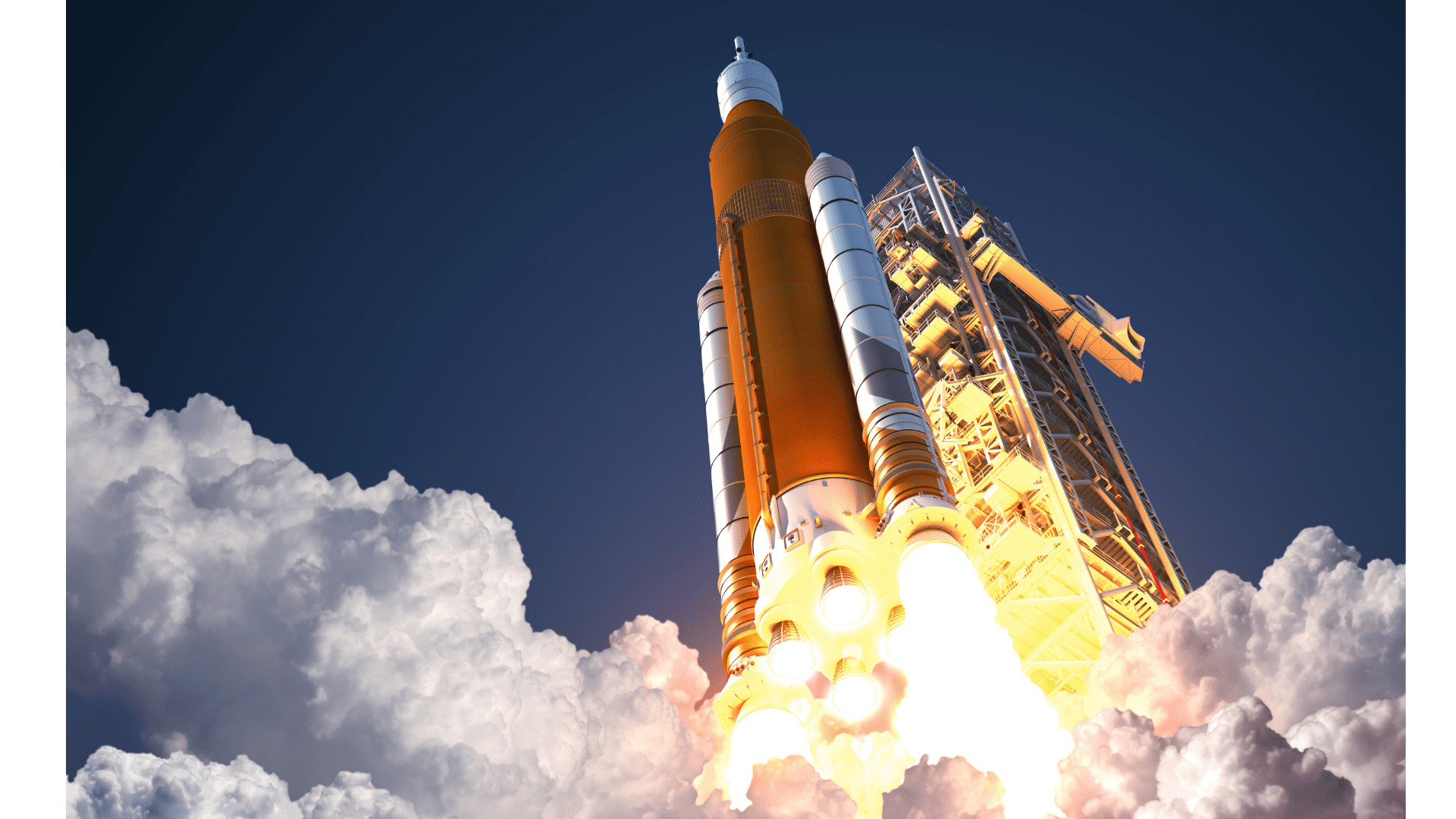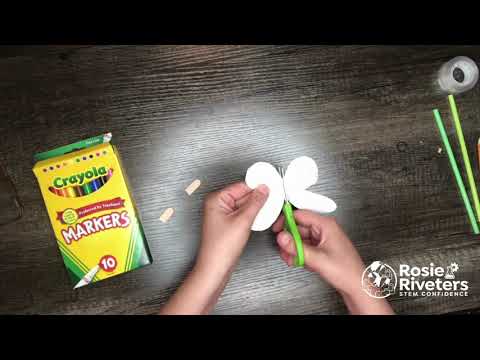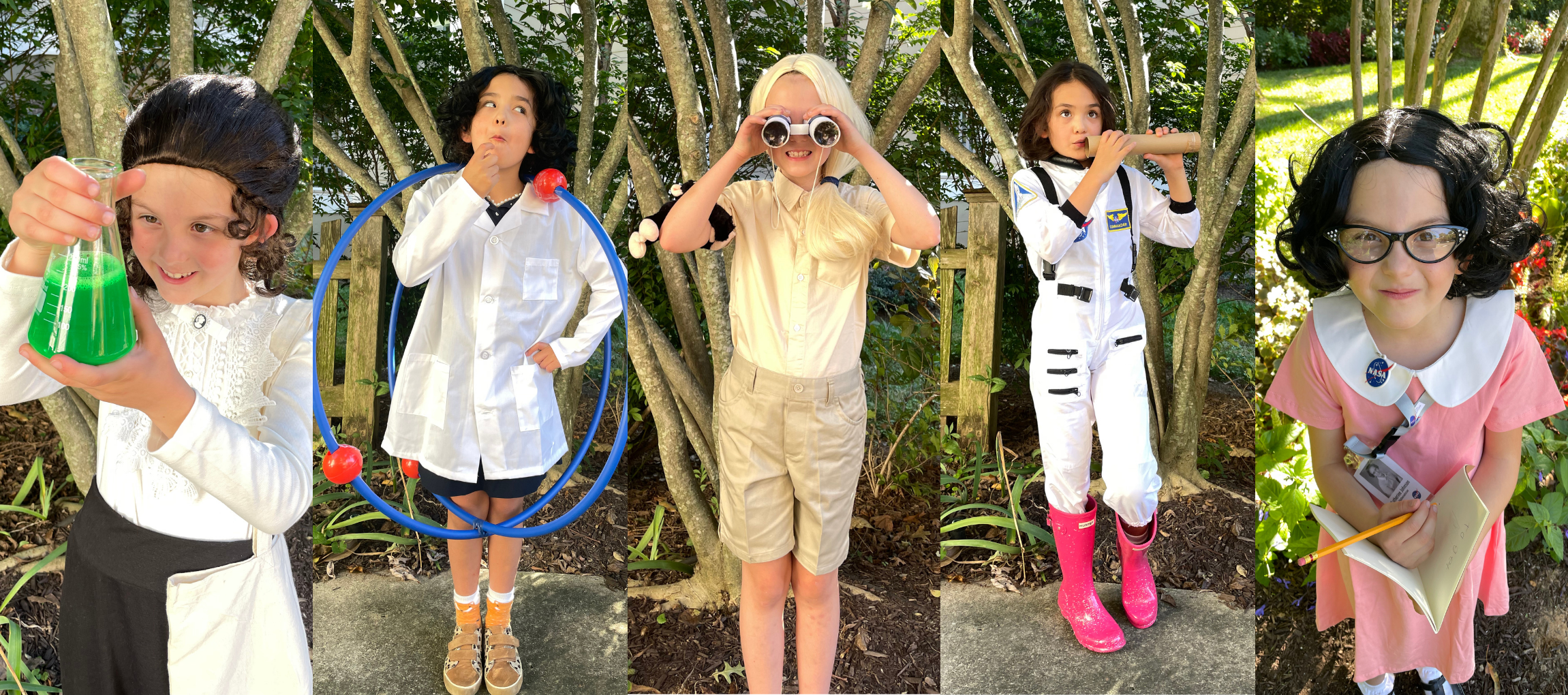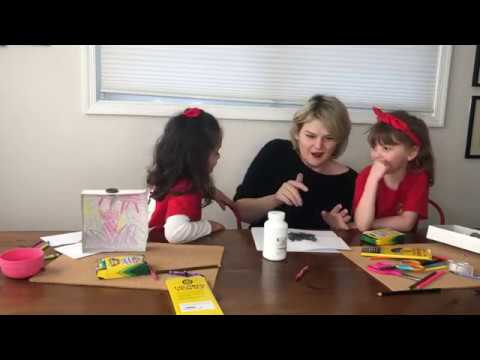In this Rosie Labs guide you will find:
- Productive struggle opportunities for students during their project build,
- Lesson objectives and concept overview,
- Optional STEM topic video to share with participants,
- Step-by-step instructions and video of the Rosie Riveters’ Film Canister Rocket project,
- Optional STEM activities to further explore the objectives and concepts used in the project build.
Objective
Participants will explore Newton’s Laws of Motion through chemical reactions by creating and
launching their own film canister rockets.
Concept Overview and Experiment Inspiration
Isaac Newton was a physicist in the 1600s who noticed that there is a phenomenon in our world called force. Force is a push or pull on an object resulting from its interaction with another object. From his observations and scientific evidence, Newton developed three laws of motion to illustrate how force works in our world.
Propulsion is a force that pushes or drives an object forward. It is dictated by Newton’s Third Law of Motion, which states that for every action, there is an equal and opposite reaction. In this case, the “action” that Newton is referring to is the applied force, and propulsion is simply a type of force that moves objects forwards or upwards. A great example of something that uses a propulsion system is an airplane! The jets of an airplane produce a gas known as exhaust which, when forced out the back of the plane by the engine, propels (pushes) the airplane forward.
In this project you will create a chemical reaction using an antacid tablet. When the antacid tablet and water are mixed, a chemical reaction occurs that creates carbon dioxide, a gas. The chemical reaction will act as the applied force that will create the propulsion of the canister. The fact that the reaction is happening in a tightly-sealed container means that the gas expands rapidly, creating enough pressure to pop the lid off and push the canister up!
Science Goals
- Newton’s Three Laws of motion are three distinct and observed naturally occurring phenomenon that describe the relationship between the movement of an object and the forces acting on the object.
- Newton’s Third Law states that for every action there is an equal and opposite reaction.
- A force is the push or pull of an object resulting from its interaction with another object.
- Propulsion, is a force that is created by another person or an object.
Vocabulary
propulsion- an applied force that pushes an object forward
force – the push or pull of an object resulting from its interaction with another object.




